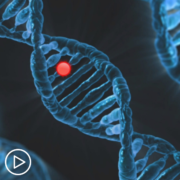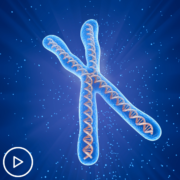What Promising AML Treatments Are Available for Newly Diagnosed Patients?
What Promising AML Treatments Are Available for Newly Diagnosed Patients? from Patient Empowerment Network on Vimeo.
What do newly diagnosed acute myeloid leukemia (AML) patients have for promising treatment options? Dr. Naval Daver from the University of Texas MD Anderson Cancer Center discusses progress in available treatments. Learn about therapies determined by key factors.
[ACT]IVATION TIP from Dr. Daver: “It’s very important to really consider all the available treatment options and if needed to seek consultation with an expert or academic center to get the most up-to-date treatments available for AML.“
Download Resource Guide en español
Related Resources:

|

|

|
Transcript:
Art:
Dr. Daver, for newly diagnosed AML patients, what are the latest and most promising available therapies?
Dr. Daver:
For newly diagnosed AML at this time, the most promising agents include targeted therapies and BCL-2 inhibitor treatments, these are non-chemotherapeutic drugs, and we’ve seen great progress in the application of these as well as recent FDA approvals.
So one of these is an agent called venetoclax (Venclexta), which is a BCL-2 inhibitor and venetoclax in combination with hypomethylating agents such as azacitidine (Onureg or Vidaza) has shown a response to close to 75 percent.
And the nice thing is that this regimen can be given and patients who are older than 70, 75 years of age, and even those who are having comorbidities are not fit for traditional intensive chemotherapy with similar response rates, so this has been approved in the last couple of years for the frontline treatment of AML, and we’ve been using this combination of venetoclax and azacitidine quite frequently with high efficacy in this patient population, the other new agents that have shown breakthroughs in AML are the targeted therapies, these include FLT3 inhibitors that target the FLT3 mutation and these have shown good activity, but the single agents with gilteritinib (Xospata) being approved in the relapsed refractory setting as a single agent where gilteritinib showed a response rate of about 50 percent as a single oral targeted therapy in relapsed FLT3-mutated AML, which is actually better than the response rate with high-dose combination more where the response rate is only about 25 to 30 percent.
So, gilteritinib is now approved, and it’s now moving and being evaluated in frontline setting other FLT3 inhibitors like lestaurtinib (CEP-701), actually just recently completed frontline studies showing improved outcome when lestaurtinib added to intensive chemo versus just intensive chemo in FLT3 in AML. And we hope and think there’s a good chance lestaurtinib will be approved in the near future.
And also IDH inhibitors have been approved both in the relapsed setting, frontline setting, and now we even have a third group of targeted therapy is called the menin inhibitors, they target MLL rearrangement and NPM1 mutations, which are seen in about 15 percent to 20 percent of the AML, so there’s been a lot of progress.
All of this in the last seven years, six, seven years with multiple targeted therapies, with multiple inhibitor-based treatments, showing progress in AML and then also recently, the concept of maintenance therapy, this is something we used for the last couple of decades in a acute lymphoblastic leukemia and multiple myeloma and in lymphoma.
But we had not had clear data in AML, but the recent study using oral formulation of a azacitidine in CC486 has shown the maintenance in patients who complete an induction consolidation and could not go to allogeneic stem cell transplant for one reason or the other was important and improve both overall survival and relapse-free survival, and so this is the first time now we have an FDA-approved and standard use of maintenance therapy after the traditional induction consolidation, so even changing the general paradigm of AML therapy.
So a lot has changed in the last seven to eight years in the treatment of acute myeloid leukemia, and this is very exciting.
And the activation tip related, this question is that there are multiple new targeted and low intensity therapeutic options available for patients with acute myeloid leukemia, and in our institution, in my opinion, even older patients are eligible for some form of therapy or the other…very few patients, if any, today, are being sent to hospitals or palliative care without treatment.
So it’s very important to really consider all the available treatment options and if needed to seek consultation with an expert or academic center to get the most up-to-date treatments available for AML.










